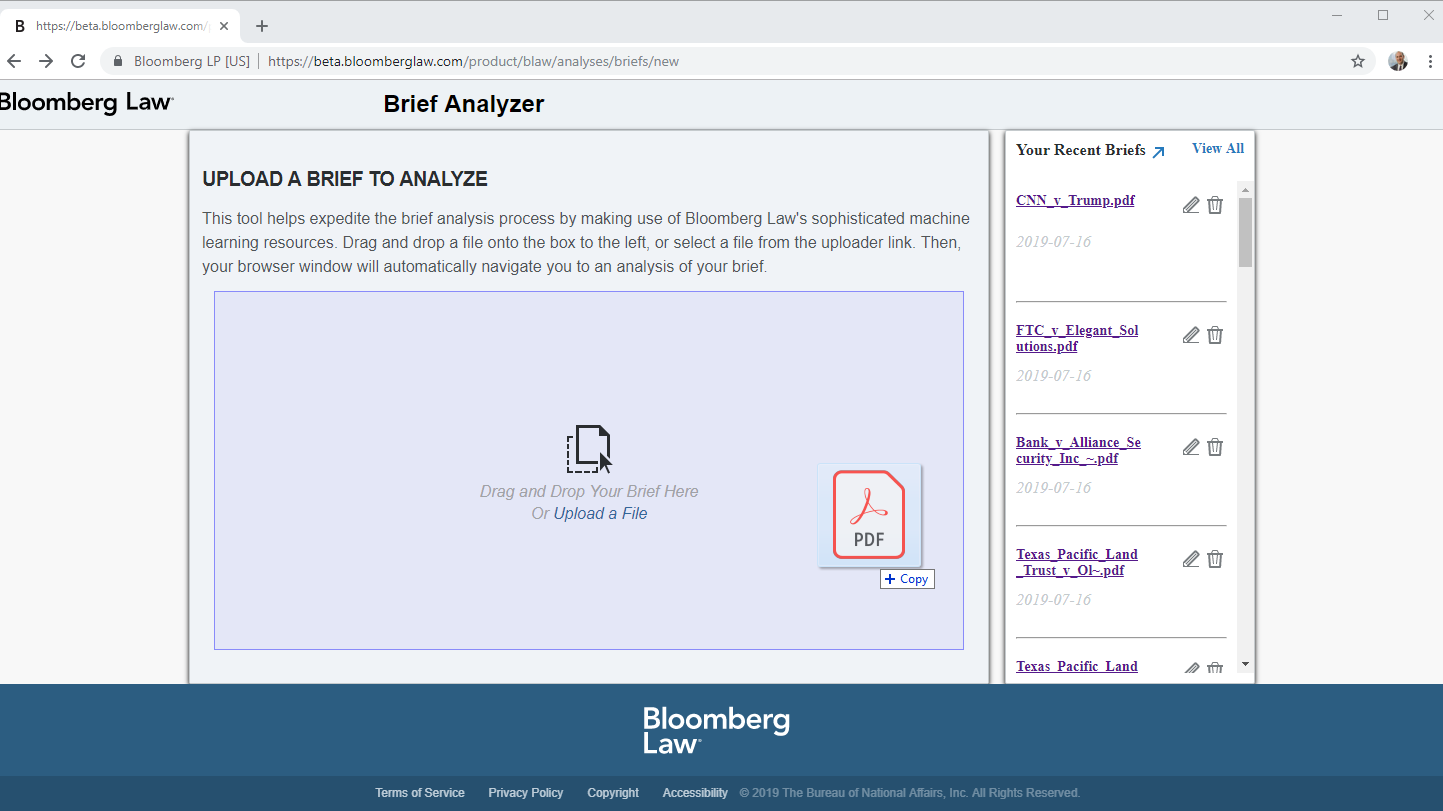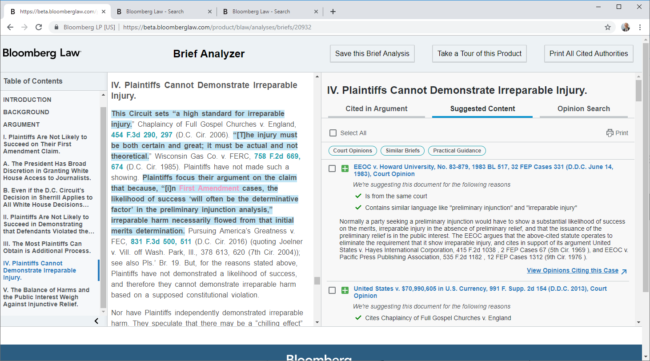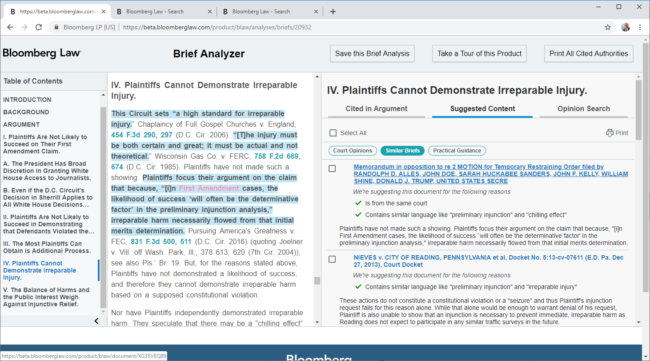As I wrote last year at Above the Law, for legal research, brief analysis is the new vogue. After legal research company Casetext introduced the first brief analysis tool in 2016, CARA, other companies followed suit with an array of brief analysis products own, including Clerk from Judicata, Vincent from vLex, EVA from ROSS Intelligence, and Quick Check from Thomson Reuters.
Last July, Bloomberg Law announced its plan to launch a brief analyzer of its own, providing a preview of a prototype during an event at the American Association of Law Libraries annual meeting.
Today, Bloomberg Law formally launched its brief analyzer tool, aptly named Brief Analyzer. Available to Bloomberg Law subscribers, it reviews the text of an uploaded legal brief or memorandum to identify other content that may be relevant, including cases not cited in the document, similar briefs from other dockets, and information from Bloomberg Law’s Practical Guidance.
While I have not yet seen the version released today, the description suggests that it closely mirrors the prototype I wrote about last July.
Note: Images in this post are from the prototype and may not reflect the final version.
What Brief Analyzer does is similar to other brief analysis products: You upload a brief, it analyzes the authorities cited in the brief, and it then suggests relevant content not cited in the brief.
A feature I liked in the prototype, which appears to be retained in the final version, is that Brief Analyzer not only suggests cases and authorities that may be relevant to your brief, but it also includes phrases that briefly explain its suggestions, such as, “Is from the same court,” and, “Contains similar language like irreparable injury.”
Another nice feature is side-by-side display of the brief and the analysis. As I saw this feature in the prototype, results are displayed across three panes. To the far left is the table of contents extracted from the brief. As the user clicks on sections of the TOC, that section of the brief appears in a panel to the right of the TOC. For that section of the brief, Brief Analyzer’s results are then displayed in the far-right panel.
As I wrote after seeing the prototype, and still true in the final version, Brief Analyzer’s suggested content includes other briefs. This means that it suggests not only relevant authorities, but also allows you to access other briefs that are on point to the section of the brief you are analyzing.
As noted, its suggestions also include links to Practical Guidance suites, which are collections of practice resources designed to help a lawyer get quickly up to speed on a topic. These could be useful for an associate who does not have deep familiarity with a topic addressed in the brief.
In July, Bloomberg Law had said that later versions of Brief Analyzer will also include references to books and treatises within Bloomberg Law. It is not clear whether these are included in this release version.
In beta testing the product, Bloomberg Law says, 92% of users said that it reduced the time required to research a brief and prepare a response, and 80% believed the tool would cut down time spent analyzing briefs by at least 25%.
As with other Bloomberg Law products, Brief Analyzer is available to all subscribers as part of their subscription cost.
“Brief Analyzer is a complete workflow solution,” Joe Breda, president of Bloomberg Law, said in a statement announcing the release. “It expedites the time-consuming task of reviewing and researching briefs, pulling together the best of Bloomberg Law’s content in an easy-to-consume format in seconds and freeing up attorneys’ time.”
 Robert Ambrogi Blog
Robert Ambrogi Blog

